An Opportunity to Stabilize our Grid and Expand Renewables in South Bexar County
A key challenge limiting the integration of more renewable electricity into our grid is intermittency: it is difficult to match supply with demand in real time. Energy storage will play a key role in addressing this challenge, but today’s storage technologies are expensive and difficult to deploy at scale.
A cheaper solution that is often overlooked is demand-side management: shifting demand towards periods when renewable electricity is cheap and abundant. San Antonio has a unique opportunity to integrate renewable electricity generation with demand-side management at the H2Oaks Center in south Bexar County operated by the San Antonio Water System (SAWS).
H2Oaks serves three purposes:
- it pumps excess fresh water from the Edwards Aquifer into the Carrizo Aquifer,
- it pumps fresh water from the Carrizo Aquifer for municipal use, and
- it pumps salty water from the Wilcox Aquifer to be purified through reverse osmosis for municipal use.
Pumping and purification use large amounts of electricity, but the facility has some flexibility in terms of when it operates. For example, it can pump and purify water when renewable electricity is abundant and store it for later use.
By coordinating with CPS Energy, SAWS could play a key role in stabilizing our grid as more renewable energy comes online by operating more during periods of abundant renewable energy and less during periods of scarcity. This would reduce the amount of electricity storage needed to stabilize the grid. Since the H2Oaks facility uses a lot of electricity, it could play a significant role in this regard.
An additional opportunity lies on the 2000 acres of property around H2Oaks owned by SAWS. Since this land cannot be otherwise developed, it is an ideal location for a photovoltaic array that could supply electricity for H2Oaks. Siting the array next to an electricity user as large as H2Oaks would reduce the losses associated with transmitting electricity over long distances.
Adding a modest amount of electricity storage capacity could help ensure a reliable water supply for San Antonio during power outages. Installing a photovoltaic array of this size would bring CPS Energy closer to its renewable generation targets and improve San Antonio’s air quality.
H2Oaks already serves an educational purpose in our community: its status as one of the largest desalination plants in the US draws visitors from other states and countries. By augmenting its programming with information on photovoltaics and demand-side management, SAWS could establish itself as a national leader in renewable water purification practices. SAWS has implemented similar educational initiatives at its Dos Rios Water Recycling Center.
by Alan Montemayor, Alamo Group Chair, & Sam Greene, Postdoctoral Researcher at UT-AustinReimagining Existence on a Rewilding Earth
Our April General Meeting features Darby Riley, local attorney and long-time Sierra Club member.
Tuesday, April 16th
6:00 pm
Meeting schedule
| Informal get-to-know-you | 6:00 pm to 6:15 pm |
| Announcements | 6:15 pm to 6:30 pm |
| Featured program | 6:30 pm to 8:00 pm |
Venue
This meeting will not be webcast on Zoom. Attend in-person at:
William R. Sinkin Eco Centro, 1802 North Main Avenue
Map
Program topic
The presentation will be a summary and discussion of Jeremy Rifkin's visionary 2022 book, "The Age of Resilience--Reimagining Existence on a Rewilding Earth", described as “A sweeping new interpretation of the history of civilization and a transformative vision of how our species will thrive on a rewilding Earth.”1
Jeremy Rifkin is an American economic, social theorist and activist, and “author of 23 books about the influence of scientific and technological changes on the economy, the workforce, society and the environment.” He is “a principal architect of the European Union’s long term Third Industrial Revolution ... to create a smart post-carbon economy, ecological society, and the world’s largest single integrated economic marketplace.”2
Rewilding is defined as “a form of ecological restoration aimed at increasing biodiversity and restoring natural processes. It differs from other forms of ecological restoration in that rewilding aspires to reduce human influence on ecosystems. ... [with a] focus on replacing human interventions with natural processes. The aim is to create resilient, self-regulating and self-sustaining ecosystems. ... [T]he United Nations has listed rewilding as one of several methods needed to achieve massive scale restoration of natural ecosystems, which they say must be accomplished by 2030 as part of the 30x30 campaign.“3
Refs:
About our speaker
Darby Riley is a San Antonio attorney and long-time environmental activist. He currently serves on the executive committee of the Alamo Group of the Sierra Club.
The Alamo Group of the Sierra Club holds its general meetings the 3rd Tuesday of most months. They're always free and open to the public.
The Green River and Books: Raven's Exile – A Season on the Green River and All the Wild That Remains by Ellen Meloy + Edward Abbey, Wallace Stegner and the American West by David Gessner
This river (Wikipedia) is something many travelers have seen very limited spots of, as I have. It's headwaters are in the Wind River Range, Wyoming. It winds south through northeastern Utah, then through a bit of northwestern Colorado, back into Utah and joins the Colorado River in Canyonlands National Park.
It may be most well known for bits in Dinosaur National Monument. The pictures below in Dinosaur are all in Colorado. Here's the park website and from there the maps page. The maps available now are very low resolution compared to what they used to provide; I've asked them about this. We can also browse with on-line maps such as Google etc. The latter are particularly useful for making sense of the routes of the Green, Yampa and Colorado rivers.
Basics about visiting and a few pictures were included in an article Febuary 2019. There was a plan to dam the Green, defeated particularly by the work of Sierra Club. This was mentioned with more detail in an article December 2022. Also, a picture at Gates of Lodore, head of Lodore Canyon of the Green August 2023. Not far downstream in Lodore John Wesley Powell's 1869 expedition lost one of three boats at what is now called Upper Disaster Falls.
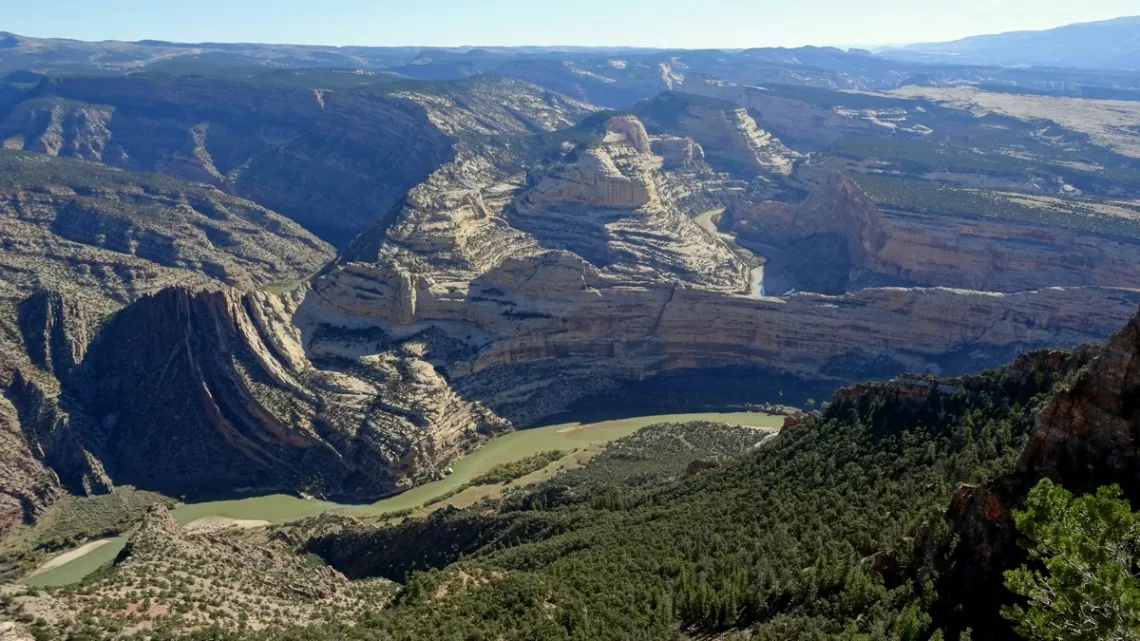
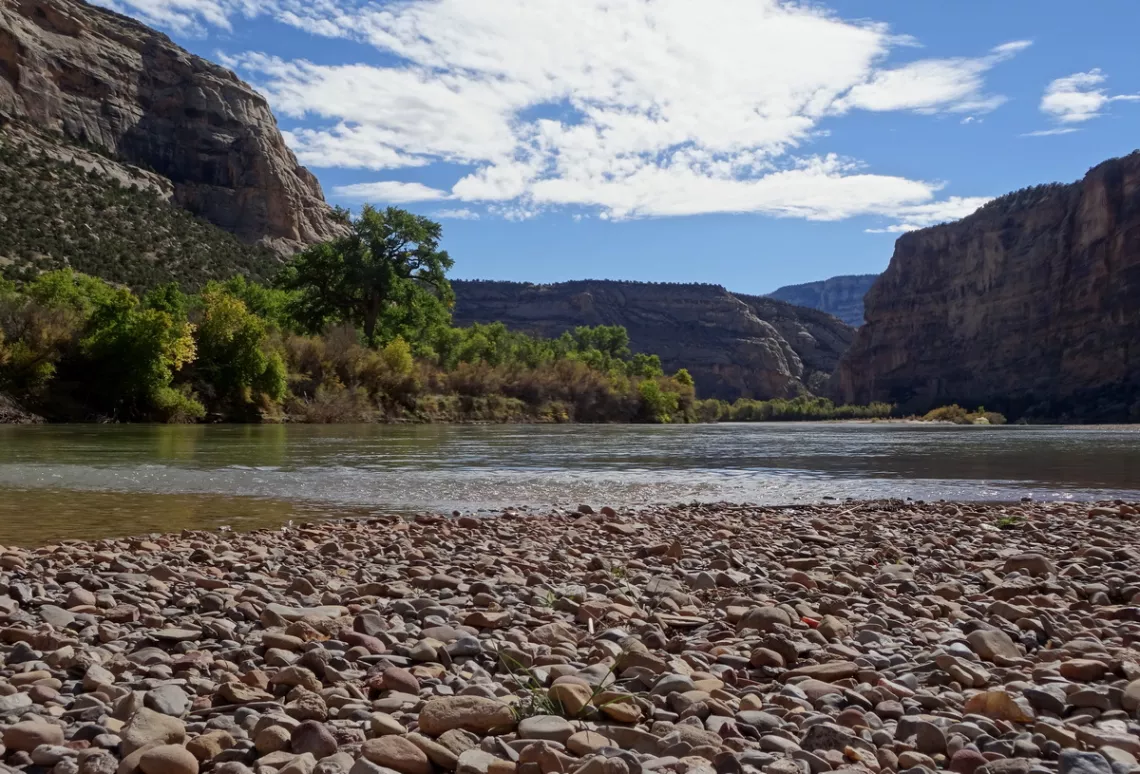
Raven's Exile – A Season on the Green River by Ellen Meloy
A deep exposition regards nature, not only the river but lots surrounding and bunch of history. Copyright 1994; surely there is much more info about what has happened along the river since if we care to research. The San Antonio library has copies of this book and the one in the next section by David Gessner.
The book begins with Ellen and her husband Mark starting in a rubber raft down Desolation Canyon of the Green in northeastern Utah. Mark is a BLM backcountry river ranger and Ellen goes along on these trips as a volunteer. Geez a free shuttle! But lots of hard work with low pay including checking river permits, providing info, assistance and first aid. And unpacking their raft for camping each day, securing it on-shore and repacking the next morning. Lots of bits about she sees and learns, on and near the Green which has cut this canyon through the Tavaputs Plateau.
Dams across the US have been involved in tremendous damage to nature. She mentions that in 1962 some poison was released into the Green near Flaming Gorge dam (in Utah upstream of Dinosaur) to kill “undesirable” fish so it could be populated with rainbow trout. And lack of knowledge of and attention to “river architecture” as she describes what rivers do when allowed to mind their own business. Like when rivers flood and cut new bits around bends and when subsiding leave sediment along point bars and in marshy spots.
It has been noted for years that the this natural work by the Colorado in Grand Canyon was sharply impaired by the Glen Canyon dam, behind which is Lake Powell, so some controlled flooding has been done in remediation attempts. Ellen says this has also been done at Flaming Gorge, with the increased flow done in concert with likewise increases of the Yampa River (picture 2nd below), which has never been dammed. And we know about the sediment impounded behind dams, which otherwise would have traveled down rivers to the benefit of everything. We wish could teleport 100 tons of sediment a day over tops of these dams.
The book mentions the Fremont and Ancestral Puebloan (formerly known as Anasazi) peoples. The former were named by archaeologists after the Fremont River. Comments about the history and traces left in the ruins and rock artwork.
Ellen mentions they did a trip down a bit of the Colorado and Lake Powell (called Lake Foul by Edward Abbey) lead by Ken Sleight. She says Sleight was the inspiration for the character Seldom Seen Smith in Abbey's books Monkey Wrench Gang and Hayduke Lives! In the July 2022 issue there was a bit about Doug Peacock who was the inspiration for the character George Washington Hayduke in those same books.
Ellen quotes Sleight: “With Abbey I always felt we could solve problems, we could set the world right. On every trip together we'd try to figure out how to do it. ... His pen was his monkey wrench. We agreed on so much never have I felt such a kinship with another person. All my life I couldn't seem to say what I wanted to say. Abbey said it for me. He was my voice, our voice. I'm barely getting over losing him”. Ellen says when they would go into National Park Service offices and see a copy of Abbey's Desert Solitaire on a shelf. This includes his story about being a ranger at Arches before it was a developed national park.
Plus many other little stories in this book.
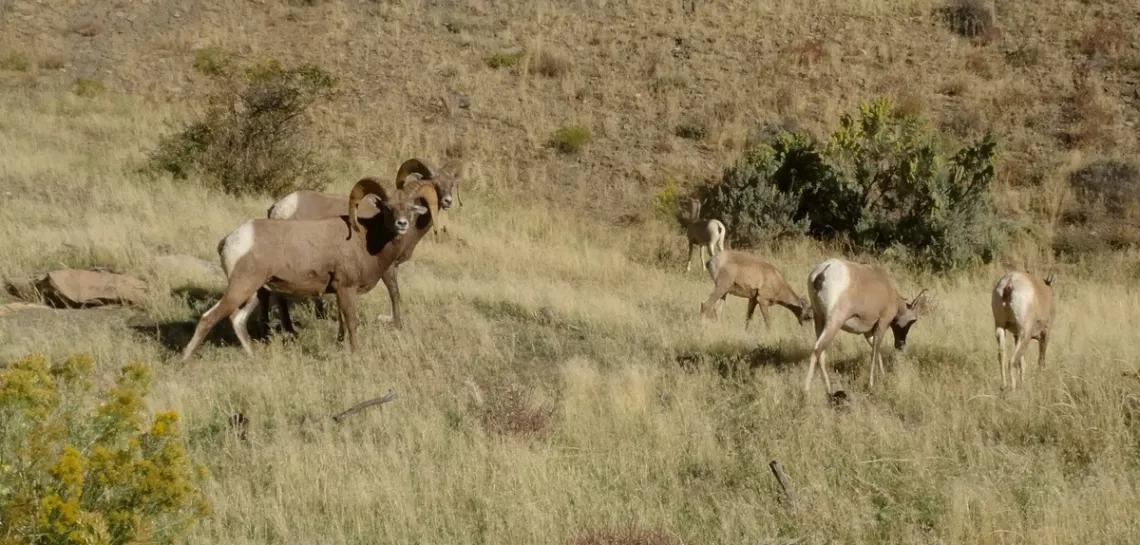
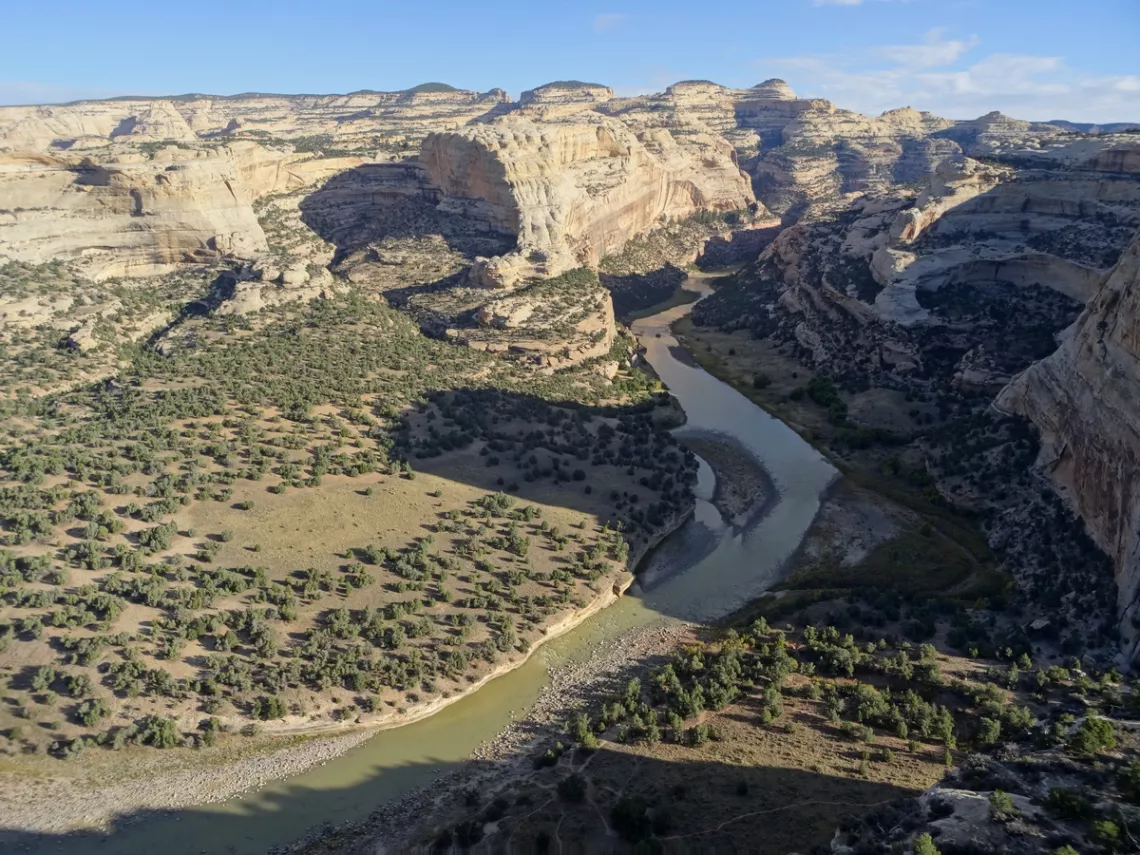
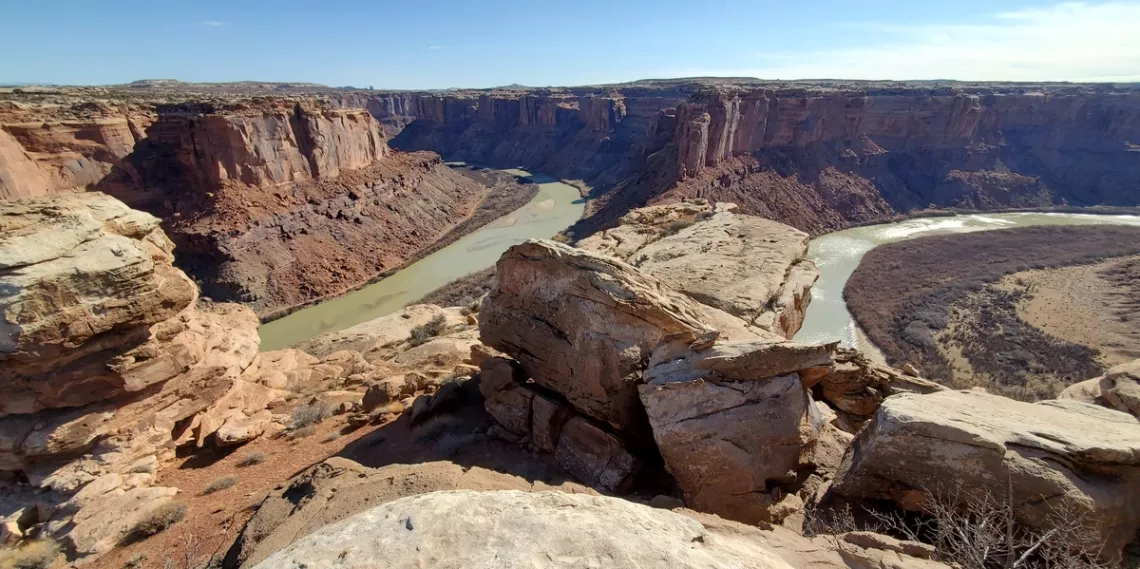
All the Wild That Remains – Edward Abbey, Wallace Stegner and the American West by David Gessner
Another profound book. Mentioning here as correlates well with the above book and others by Ellen Meloy. The Wikipedia page contains much detail about Gessner who has many published books and was a writing professor.
The book contains good bits comparing the works of Abbey and Stegner but also much stuff about the environment and nature in the American west. With good info on what happened in the west with the attempted conversion of prairies and desert to farmland which ended up with the dust storm devastation. The author visits many of the places in the west that Abbey and Stegner wrote about, and re-visits their writing about them.
About monkey-wrenching, the so-called “eco-terrorism” of Earth First! and other early workers against serious widespread destructive work in natural areas, particularly national forests. And, about the importance of migration corridors for wildlife, particularly with the impact of global climate change. Isolated, disconnected parks and refuges are insufficient, many species are at risk.
I had earlier read about Gifford Pinchot's work as head of the US Forest Service where he emphasized resource extraction (article January 2024). Then in this book I read about Pinchot having the face down with great determination characters in the government that wanted access to public lands without controls for private interests.
Gessner visits Doug Peacock. Doug recounted how Abbey died: "Finally he pulled out all the tubes and announced, with the clearest eyes I have ever seen, that it was time to go". Abbey's wife, Doug and other friends took him from the hospital. Doug had been a Green Beret medic in Vietnam. Abbey soon died and was buried as he had wished likely in Cabeza Prieta NWR, southeastern Arizona (also in July 2022).
With a bunch of Gessner's reflections on what writing means for him, what he learned from other writers, and commentary about those others. He mentions Abbey could be obstreperous; some readers are annoyed. But he shows this has different meanings/sources/facets. Having been a writing professor he knows how to communicate this stuff. All rather interesting, even for amateur writers.
by Kevin Hartley, Sierra Club Life MemberFrom the e-Mailbag
From time-to-time, the Alamo Group receives messages concerning local environmental issues. If you have thoughts on any of these issues, send us a message and we'll forward it to the writer. The views and opinions expressed here are those of the individual authors and do not represent the views or opinions of the Alamo Group or its members.
2nd Annual Regional Urban Forestry Conference
In collaboration with the Alamo Forest Partnership and Green Spaces Alliance, Bexar Branches Alliance is excited to announce our 2nd Annual Regional Urban Forestry Conference on April 16th & 17th. Titled "Fiesta Verde: Rooted in Cultivating Community, Conservation", our primary objective for this event is to unite individuals from across Bexar County to engage in discussions regarding the present condition and the future prospects of our urban forest.
Registration and more information are on this ISATexas webpage.
submitted by Alan M.Starting Out Wild training
Join the Phil Hardberger Park Conservancy, on Tuesday, April 23rd, for a short workshop to learn the background on the development and philosophy of the Starting Out Wild program. This program is designed for classroom and family use and we'll look at some of the best developmental instructional practices for teaching real science to very young children. We'll also overview our Family Nature Guides, and how to set up a lesson.
This workshop is intended for educators, parents, and volunteers. Registration and more information here.
submitted by Jerry M.
Outings: The Call of the Wild
Visit the Alamo Sierra Club Outings page on Meetup for detailed information about all of our upcoming Sierra Club Outings.
The Alamo Sierran Newsletter
Richard Alles, Editor
Published by the Alamo Group of the Sierra Club, P.O. Box 6443, San Antonio, TX 78209, AlamoSierraClub.org.
The Alamo Group is one of 13 regional groups within the Lone Star Chapter of the Sierra Club.
Changed your contact information?
If you're not sure whether the Sierra Club has your current email address, send an email to Member Services with your name and address and/or member ID (see Locating Your Member ID) so they can add your email address to your member record.
Have you moved? Let us know by sending your old address, your new address and your member ID to: address.changes@sierraclub.org.
Go online for the latest news and events
 |